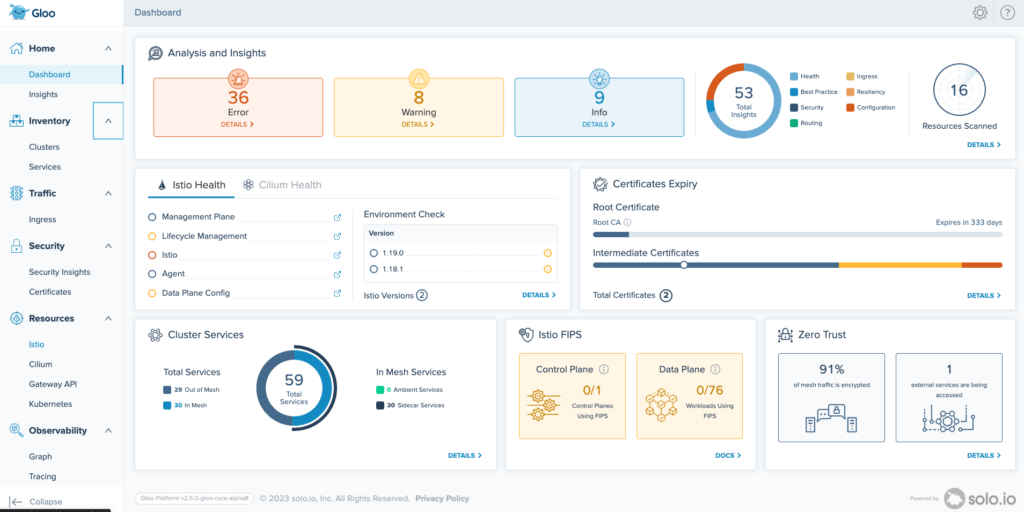Solo.io Brings Istio and Cilium Together in Single Offering
Solo.io today launched a curated instance of the open source Istio service mesh that comes pre-integrated with Cilium, open source software that enables network connectivity and load balancing between application workloads.
Gloo Mesh Core, in addition to providing ongoing support for both Istio and Cilium, provides access to observability tools to simplify troubleshooting via a unified dashboard that collects data using OpenTelemetry agent software to enable health checks and generate alerts. Other capabilities include customizable backends for data control, FIPs compliance and integrations with third-party monitoring tools.
Tom Callway, vice president of marketing for Solo.io, said Gloo Mesh Core is central to a larger effort to streamline the company’s product portfolio around three offerings that include an enterprise edition of Istio and an application programming interface (API) gateway. The overall goal is to reduce the level of friction organizations encounter when enabling connectivity across cloud-native applications, he added.
Solo.io is best known for providing a commercial instance of Istio that runs on Kubernetes clusters. The company last year added support for Cilium, one of the first networking frameworks to take advantage of extended Berkeley Packet Filtering (eBPF) in the Linux kernel. There are now more than 800 contributors to the project, and organizations that have adopted it include Bell Canada, Bloomberg, DB Schenker, S&P Global, Sky and The New York Times.
Cilium, along with Istio and Kubernetes, are all graduated projects being advanced under the auspices of the Cloud Native Computing Foundation (CNCF).
It’s not clear when organizations will move beyond the need for an API gateway or proxy software to manage application programming interfaces (APIs), but Istio has gained traction in enterprise IT environments that have hundreds, sometimes thousands, of APIs to manage.
To make it easier to manage Istio, Solo.io also provides a control plane, dubbed Ambient Istio Mesh, that can be deployed using either container sidecars or as a process within Istio that enables proxy functionality to be pushed down to the node level. That approach improves the overall performance of the Istio service mesh while simultaneously reducing the amount of infrastructure resources required while enforcing policies all the way up to Layer 7 of the networking stack. The overall goal is to leverage a modular architecture that will, over time, make it easier to add additional functionality to the Istio service mesh as requirements evolve.
There are several options available when it comes to employing a service mesh in a Kubernetes environment, but as application connectivity becomes more challenging, most enterprise IT organizations are going to want to streamline the number of tools and platforms required to achieve that goal. No one can be certain how many instances of Cilium have already been deployed alongside Istio, but as both platforms gain traction in Kubernetes environments, there is a clear opportunity to streamline management and support.
The issue now, of course, is to increase the accessibility of Kubernetes via tools that enable the platform to be managed at a higher level of abstraction alongside the other elements needed to run cloud-native applications in a production environment.




